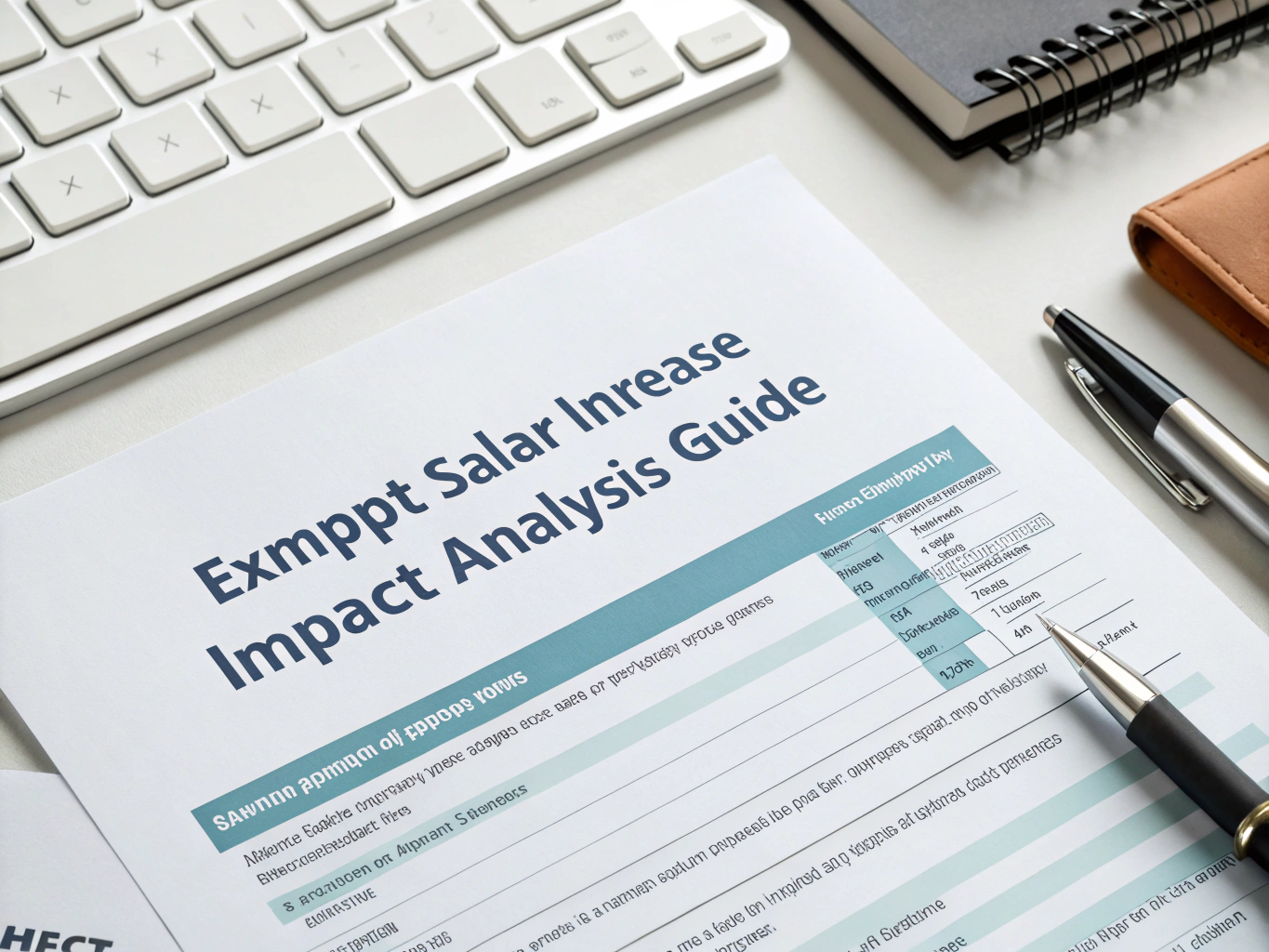What is an Exempt Salary Increase Impact Analysis Guide?
The Exempt Salary Increase Impact Analysis Guide is a vital tool for HR professionals that helps assess the implications of salary increases for exempt employees. This guide allows you to evaluate how these adjustments can influence employee performance, satisfaction, and retention while ensuring compliance with legal standards. Utilizing this guide ensures that your organization approaches salary increases strategically and thoughtfully, fostering a positive workplace culture.
Template
Below is a template you can customize for your organization’s needs:
Exempt Salary Increase Impact Analysis
Employee Information
- Name: ____________________________
- Job Title: ________________________
- Department: ______________________
- Current Salary: ___________________
- Proposed Salary: __________________
1. Exempt Status Criteria
- Job Duties Test: ________________________
- Salary Basis Test: ______________________
- Salary Level Test: ______________________
2. Impact on Exemption Status
- New Salary Compliance: __________________
- Job Duty Consistency: ___________________
3. Internal Pay Equity
- Benchmarking Comparison: __________________
- Internal Equity Assessment: ________________
- Pay Compression Analysis: __________________
4. Budgetary Impact
- Cost-Benefit Analysis: _____________________
- Long-Term Financial Planning Considerations: _______________
5. Legal and Compliance Considerations
- State and Local Law Compliance: _______________
- Recordkeeping Requirements: __________________
6. Communication Plan
- Employee Notification Strategy: ________________
- Manager Training Needs: ______________________
7. Monitoring and Review
- Regular Review Schedule: ______________________
- Feedback Mechanism: __________________________
8. Scenario Analysis
- Identify Hypothetical Scenarios: _________________
Analysis Completed By: ________________________
Date: ________________________
Purpose and Benefits
The purpose of the Exempt Salary Increase Impact Analysis Guide is to provide a structured framework for evaluating the implications of salary increases for exempt employees. This guide empowers HR professionals to make informed, compliant decisions that support organizational goals while enhancing employee satisfaction.
- Informed Decision-Making: By understanding the various factors at play, you can confidently propose and implement salary adjustments that align with business objectives.
- Attracting Talent: Competitive salaries are key to attracting top talent. This analysis helps ensure your compensation packages remain appealing.
- Employee Retention: Fair and transparent salary increases can boost employee morale and loyalty, reducing turnover costs.
- Compliance Assurance: Staying compliant with FLSA regulations and local laws protects your organization from potential legal issues.
- Enhanced Internal Equity: Ensuring fairness and equity in compensation promotes a positive and inclusive workplace culture.
Essential Components
The following elements should be included in your Exempt Salary Increase Impact Analysis to ensure thorough evaluation:
- Employee Information: Collecting basic information helps contextualize the analysis for specific individuals.
- Exempt Status Criteria: Assessing compliance with FLSA’s criteria is crucial to avoid misclassification issues.
- Impact Assessments: Evaluating how the salary increase affects exemption status ensures ongoing compliance.
- Internal Pay Equity: A benchmarking process helps maintain competitive salaries within your industry.
- Legal Considerations: Documenting compliance with relevant laws protects against potential audits.
- Communication Strategies: Planning how to communicate changes fosters transparency and understanding among employees.
How to Use This Form
Implementing the Exempt Salary Increase Impact Analysis Guide effectively requires careful planning and execution:
- Gather Relevant Data: Collect necessary employee data and salary benchmarks before beginning your analysis.
- Involve Key Stakeholders: Engage managers and department heads to gain insights into employee performance and job roles.
- Document Your Findings: Ensure that all assessments, decisions, and justifications are recorded for future reference.
- Communicate Changes: Once decisions are made, communicate clearly and transparently with impacted employees and managers.
- Review Regularly: Set a schedule for periodic reviews of salaries to remain competitive and compliant.
Legal and Compliance Considerations
It’s essential to be aware of legal obligations when conducting salary increase analyses. Ensure compliance with the Fair Labor Standards Act (FLSA) and any applicable state or local laws, as different regulations may impose additional requirements for exempt employees. Maintaining proper documentation of the analysis process will help demonstrate compliance during audits and reviews.
Best Practices
To maximize the effectiveness of your Exempt Salary Increase Impact Analysis, consider the following best practices:
- Regular Training: Keep HR staff and managers updated on FLSA regulations and compensation best practices to ensure ongoing compliance.
- Use Data Analytics: Leverage data analytics tools to monitor salary trends and employee satisfaction, providing valuable insights for decision-making.
- Foster Open Communication: Encourage employees to voice concerns regarding salary and job responsibilities, creating a culture of transparency and trust.
- Scenario Planning: Regularly conduct hypothetical scenario analyses to prepare for potential changes in regulations or market conditions that may affect compensation strategies.




